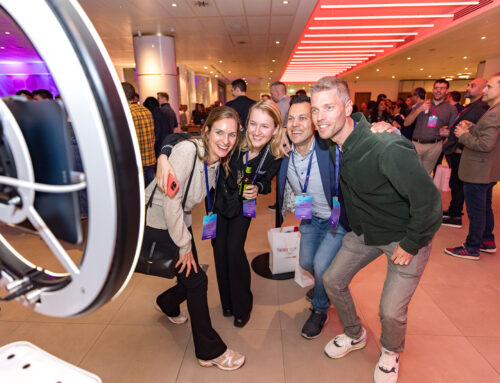Inclusivity: the practice or policy of providing equal access to opportunities and resources for people who might otherwise be excluded or marginalized, such as those having physical or intellectual disabilities or belonging to other minority groups. [OED definition]
Inclusivity in events is a must these days. With over a billion people, or 15% of the world’s population, experiencing some form of disability*, making events more accessible and inclusive has become non-negotiable.
When we organise events at Sunflower Event Team, inclusivity is always high on our agenda and site visit checklist. Lately, we’ve seen a few venues that are not fully equipped to welcome people with a physical disability. This can include things like :
- not having a ramp for a speaker in a wheelchair
- restricted lift access to all event rooms
- no accessible toilet access
- heavy (not automated) fire doors.
For us, this can really make or break whether we use a venue, as all our clients’ guests needs must be catered for.
Neurodivergent guests are also very much on our minds; recently, we’ve had a speaker request to submit a pre-recorded speech for an online conference, due to social anxiety – such a simple solution that still gets their message across!
We have an ever-evolving list of considerations for inclusivity and accessibility, which we have shared with you below.
Before an event: choose a venue that is…
- Accessible
Accessibility is so much more than wheelchair access and accessible toilets.
Is there nearby parking or accessible public transport? Is elevator/ramp access provided? Are bathrooms gender neutral and easy to locate? Will access be equal for all guests, suppliers and speakers in every area and aspect of your proposed event?
- Well-lit (but not too bright)
Consider those who will be affected by strobe lights and dim lights, which can cause problems for those with vision impairments, epilepsy, and those on the spectrum. Provide clear signage pointing directions and identifying locations. Check if projection screens are visible from all seats.
Before the event: other considerations…
- Consider doing a dry run of the event so that the appropriate access is available
- Request religious dietary restrictions when guests register beforehand or buy tickets for an event.
- Include vegan, nut-free, gluten-free, and dairy-free options in your menu choices.
- Ensure that all communication and marketing materials for the event are accessible, including flyers, emails, and social media posts.
- Provide clear instructions for how to request accommodations or assistance, and have a designated point of contact for any questions or concerns.
Don’t forget that accessibility need to be considered for online events, too: a speaker at one of our recent virtual events required close captioning to be available so that she could respond in the Q&A.

At the event:
Capture delegate and speaker requirements and requests in advance on the registration form so they can be accommodated, and adjustments made for their comfort on the day. For example, people with a guide dog would need a dog water bowl, access to an outside area outside and maybe Braille print-outs, too.
It’s almost impossible to anticipate every adaptation you might be asked for, but making it clear that you will accommodate requests (and follow through on them) will make your attendees and speakers more comfortable.
Also:
- Waive any ticket or entrance fee for a carer / companion – including sign language interpreters.
- Offer priority seating for anyone with accessibility issues. Pathways should be free from obstructions, with wide doorways and aisles to accommodate wheelchairs, scooters, canes, and service animals.
- Avoid imposing overly strict rules and dress codes.
- Consider the sensory needs of neurodivergent individuals by creating a sensory-friendly environment. This may include minimizing bright lights, loud noises, or strong scents.
- Clearly indicate allergens in all foods.
- At self-service buffets, provide an option for a server to bring food directly to anyone who is less able to cope with a crowded room.
- Make sure slides and presentations are accessible, with fonts large enough to be read up to the last row of seats, high-quality images, colour contrast and clear messaging.
- Provide sign language interpretation, closed captioning, large-print materials, and assistive listening devices if requested.
- Offer a quiet area for guests who need a break from the noise or crowds.
- Video streaming / hybrid events give access to people who – for whatever reason – are unable to attend in person.
Ensure that ice-breakers, breakout sessions, meals, tea/coffee breaks, and any other activities within the main event are also accessible.
Provide training and education for your staff to ensure they are knowledgeable about accessibility and disability etiquette.

After the event:
Consider event swag and other goodies:
- Offer clothing in a range of colours and styles, in both large and small sizes.
- Make sure items don’t take up too much baggage space for those flying.
- Clearly label any food items for allergens.Get feedback:
Reach out to your guests and ask if they were comfortable and able to fully participate. Ask if there is anything they needed. Be prepared to take down notes of their overall experience and learn from their feedback so you can incorporate them in your future events.
This is not a comprehensive list of considerations, more an informed starting point! We’d love to hear your feedback, examples and helpful tips if we’ve missed anything!
* WHO World Report on Disability 2011






